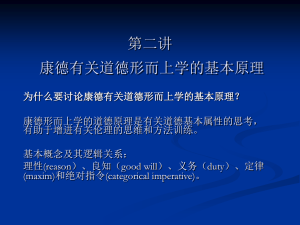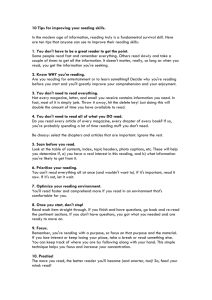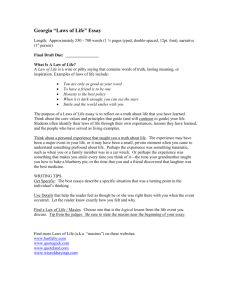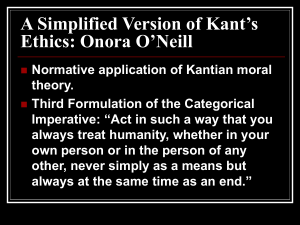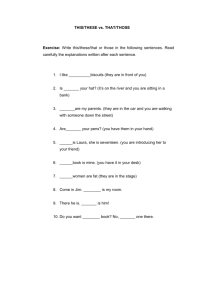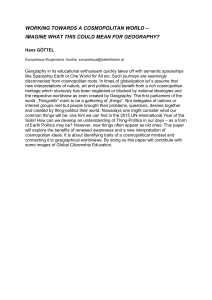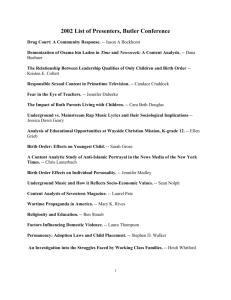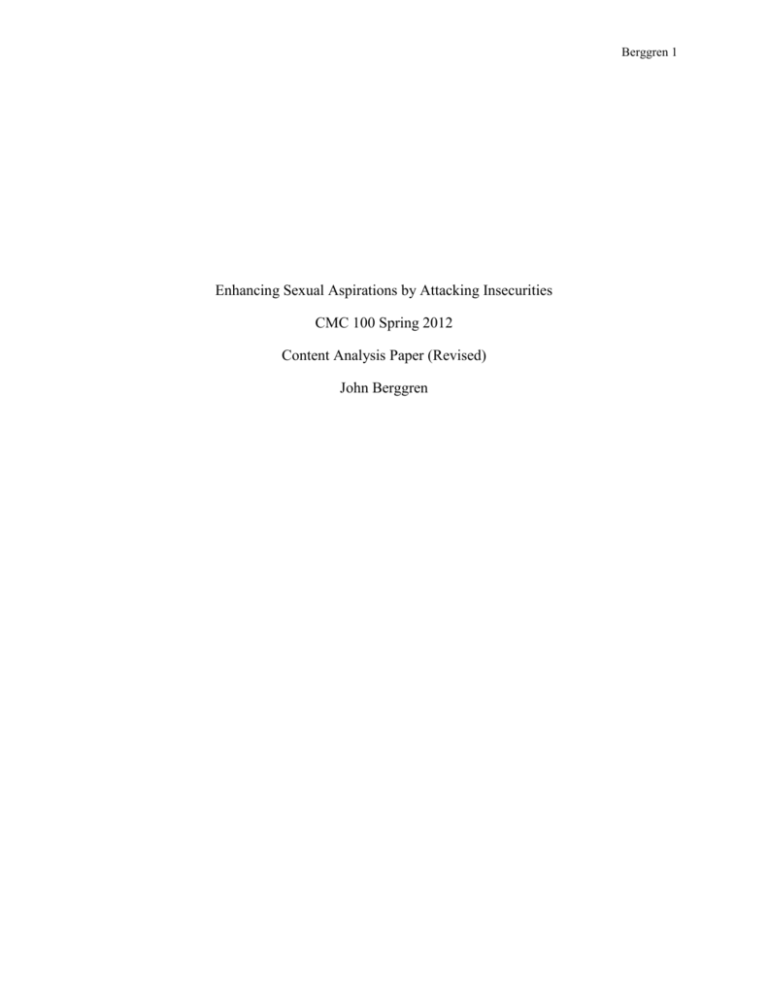
Berggren 1
Enhancing Sexual Aspirations by Attacking Insecurities
CMC 100 Spring 2012
Content Analysis Paper (Revised)
John Berggren
Berggren 2
Abstract
This paper performs a content analysis of the advertisements from three magazines – the
March 2012 issue of Maxim, the April 2012 issue of Cosmopolitan, and the March 2012 issue of
Seventeen. I found the three sets of advertisements as a whole to consistently attack their
demographics' confidence in their sexual lifestyles by creating, exposing, or playing on material
and body image insecurities. All three magazines' advertisements have clear targets for and
influence readers through revealing a sense of vulnerability which threatens the readers' ego. The
relationship between demographics and the sexualized products are presented in many examples
paradigmatic of more specific trends in the magazines to further explain male insecurities about
material possessions and female insecurities regarding body image.
Berggren 3
This paper performs a content analysis of the advertisements from three magazines – the March
2012 issue of Maxim, the April 2012 issue of Cosmopolitan, and the March 2012 issue of Seventeen. I
found the three sets of advertisements as a whole to consistently attack their demographics' confidence in
their sexual lifestyles by creating, exposing, or playing on material and body image insecurities. The
companies' selling point is in all three cases promoting sex through using their product. Maxim primarily
targets males with 78.2% of readership versus women with 21.8% ("Maxim"). The real target market for
this magazine is teenage males. Maxim ads use money, toys, alcohol and tobacco as material goods that
are the source of sex and confidence. Since Maxim has alcohol and tobacco ads, moreover, their
demographics are only calculated from ages 18+ and 21+ according to their Media kit. The male median
age according to their media kit is 32, but this doesn't include readers under 18. Cosmopolitan has similar
demographics to Maxim, only with an opposite gender focus. The median age is 31.3, and women were
the primary reader with 85% of readership ("Cosmopolitan"). Cosmopolitan never included teenagers in
their media kit because the magazine is more sexually aggressive.
The age demographics of Seventeen are more specific, because they specifically target young
teenage girls. They reported a median age of 16.5 and included 12-19 year olds ("Seventeen"). One
would assume the readership for Seventeen would have a median age of 17. It is interesting to see the
median age skewed younger which better explains the perspective of the magazine and its differences
from the other two, which I will discuss below. Unlike Maxim and Cosmopolitan, Seventeen stresses the
racial diversity of their readership (See figure 1). However, the Seventeen ads have only white models in
56% of the ads, which includes ads without models at all. Through a content analysis of more than a
dozen advertisements presented in Maxim, Cosmopolitan, and Seventeen, I found the majority of ads
targeted confidence of sexual lifestyles through males' insecurity of material possession and females'
insecurity of body image.
Maxim's demographic is exposed to sexual products and are pressured into fixation due to lacking
sexual activity in their lives. For example, on the front cover of Maxim, small copy reads "This Issue is
75% Pant-free" to entice the reader (See figure 2). In addition, a Viagra ad in the back of the magazine
Berggren 4
shows an older woman wearing a 50's style polka dot swimsuit, a large black sun hat, and white ballet
shoes (See figure 3). The woman is smiling, in a perky and excited position, and her white shoes
symbolize purity. The fact that the ad is repeatedly placed in the back of the magazine is interesting.
Since it is a discreet quarter page, it catches the reader's attention but doesn't take away from the
magazine as a whole. The bottom of the ad even reads, "Safe, Secure, Discreet". These advertisers
presume men are self conscious about their sexual performance. Placing the ad in the back and smaller
makes it discreet, although hidden placement also increases self awareness and anxiety. Other products
seen in Maxim such as Wrigley chewing gum, Gillette body wash, and Gucci cologne are designed to
mask different body odors (See figure 4). The Gillette ad of the sweaty man's chest with the basketball
player dunking is clearly targeting boys (See figure 5). The main demographic for Maxim is targeted
with sex enhancement products and health products, both used to feel more sexual.
Almost 69% of the advertisements in the March 2012 issue of Maxim have a strong sexual
message. There is not a sex products displayed, but products associated with sexuality instead. The
major products in the magazine are alcohol, tobacco, or material possessions related which are used to
promote sexual aspirations. In addition, large quantities of ads expressing sexuality give an impression
that everyone is more sexual than the reader. This impression can result in more insecurity and pressure
to buy sexualized products. The lack of confidence and power seen in Maxim creates insecurities and
pressures to seek dominance. Images such as the cover girl, where the reader can undress the model,
enforce dominance over the model. She is portrayed as a sexy object that is happier when undressed by
the reader. The act of undressing a girl at the beginning of reading the magazine instills confidence in the
reader. After opening the flaps, an alcohol ad for Jose Cuervo takes credit for giving the reader this
power. Therefore, without the Jose Cuervo product, the opportunity would not have been available and
once again, insecurity prevails. Later in the Magazine, advertisements for UFC fighting and legal steroids
also encourage physical power as well (See figures 8-9). Maxim informs the reader that power is essential
for attracting women. Insecurities are a weakness and Maxim has all of the stereotypical male image
enhancement products to conceal those feelings.
Berggren 5
Seventeen and Cosmopolitan ads also encourage their female readers to believe they are not
sexual enough. However, the types of sexual messages in the female magazines target body image
insecurities. For example, In Cosmopolitan, a Tignanello bag advertisement sexualizes the model while
placing the reader in the model's body (See figure 6). The model's bottom, breasts, and lips are visible,
yet the rest of the face is not. The reader can imagine herself in the model's body because the identity of
the model is removed. The product itself is only a bright pink leather bag used to catch the reader's
attention. The bag now serves a different purpose. The cosmetic products seen in both Seventeen and
Cosmopolitan are all used to extenuate certain body features the encourage a certain body image. The
pressures that the magazine implement on women readers are to over sexualize the ideal body. The Sally
Hansen self-waxing hair removal kit shown in Seventeen is a perfect example of catering to a girl's pubic
hair dilemma (See figure 7). The magazine and Sally Hansen convey waxing hair removal as being
essential in order to please men. Cosmetic advertisements attempt to alter sexual readiness by increasing
insecurities about girls' bodies in an effort to sell the product.
The insecurities targeted for women were much more specific as they oriented around the body.
Beauty products consisted of 68% of the advertisements in both Cosmopolitan and Seventeen. In Maxim,
only a few appearance altering products were advertised. In Seventeen, a Maybelline advertisement for
blush displayed childish, natural, and pure messages (See figure 10). First, the blush is supposed to be
'bouncy', so they have two tiny pictures of a hand squeezing a child-like pink bouncy ball. The target for
this ad is young females because a transition between playing with toys and putting on makeup is
occurring. Second, the copy reads "Maybe she's born with it. Maybe it's Maybelline.", which adds a
'natural' message that this product is necessary for life as she could be born with beauty. Lastly, the white
and pink colors along with the model's pale skin establishes a feeling of purity. There are some major
differences seen between Seventeen and Cosmopolitan. The readers of Seventeen are introduced to
methods of getting male attention and feeling self conscious. Cosmopolitan knows its readers are already
insecure, therefore they move to the next step by focusing on pleasuring men sexually.
Berggren 6
The presented aspirant addiction seen in all three magazines have specific implications depending
on the readers' gender. Gadgets, tobacco, alcohol, and money prevailed as necessary implications for men
to be sexually successful. For women, beauty products dominated the overall message of sexual
insecurity. The insecurities differed for each gender, yet their motives were primarily sexually driven.
The ACM Wallet in Maxim strongly connects the male figures money to sex as the copy reads "keep it in
your pants." while a woman reaches for his credit cards (See figure 11). The female is the only person
seen in the ad, but she has obviously invested a lot of time to looking overly sexual. For women, it
explains how pleasuring a man will give you access to his money. This advertisement demonstrates sex
addiction for both genders because they try to attract each other in order to feel assertive. A similar
advertisement in Maxim that provides the same message is for a high tech Iguana 29 boat (See figure 12).
This boat has caterpillar tracks that give it the capability of driving on land. The usefulness of this
product is minimal, but the technology and sex association seen in the advertisement make it attractive.
In one of the images, a female model is driving the boat alone. Since she is unaccompanied, the reader
can fantasize about being with her, if he owned it. It is clear that she is not the owner of the vessel
because it is a wealthy man's toy. Once again, possessing this valuable high tech toy implies that sex will
be acquired as well.
Sexual aspirations in these magazines are amplified, although safe sex is not. Throughout all
three magazines, a single contraceptive advertisement was not found. The irresponsible sexual
encouragement to males and females contradicts ethical information of protection. Advertisers use
sexuality to sell material items to insecure male readers and body image products to insecure female
readers.
Berggren 7
Work Cited
"Demographics Profile." Cosmopolitan Magazine: Digital Media Kit. Cosmopolitan. Web. 23
Mar, 2012.
<http://www.cosmomediakit.com/r5/showkiosk.asp?listing_id=360482&category_code=r
ead&category_id=27810 >
"Print Media Kit." Maxim Magazine: Digital Media Kit. Maxim. Web. 1 Mar, 2012.
<http://www.maximmediakit.com/print/readership/index.php>.
"Seventeen: A Large, Diverse & Affluent Audience." Seventeen Magazine: Digital Media Kit.
Seventeen. Web. 23 Mar,
2012. <http://www.seventeenmediakit.com/r5/cob_page.asp?category_code=read >
On my honor, I have not given, nor received, nor witnessed any unauthorized assistance on this work.

